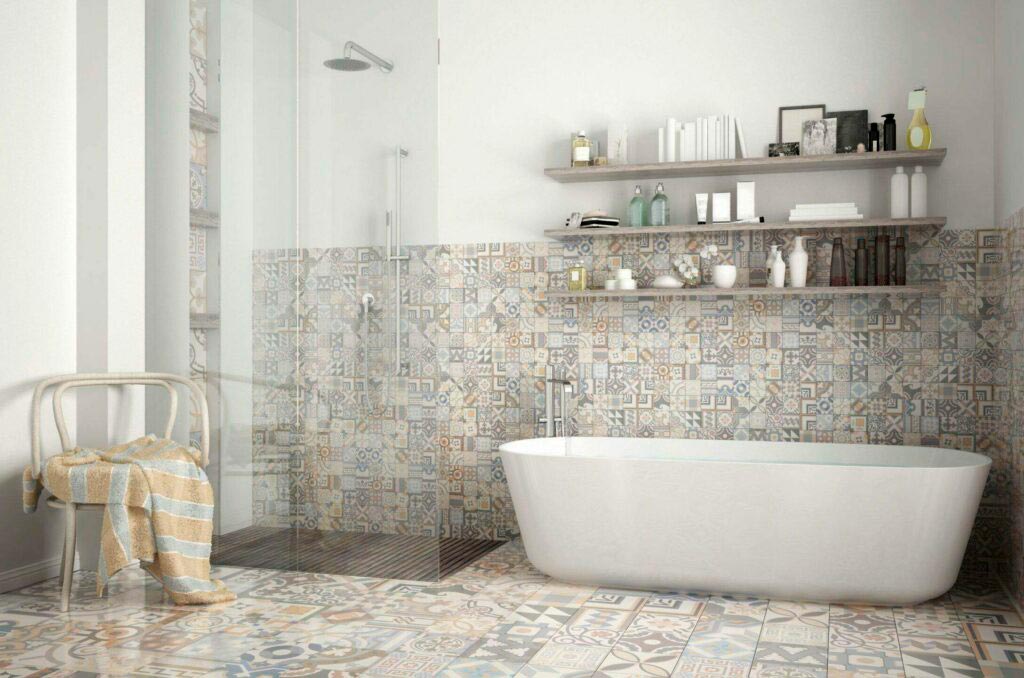When renovating a bathroom, one of the first questions that arises is, what do you put under tile in a bathroom? The choice you make can significantly affect the tile's lifespan, comfort underfoot, and the overall functionality of the bathroom. Layering the right materials underneath tiles not only enhances aesthetics but plays a crucial role in insulation, moisture resistance, and soundproofing.
From cement boards to waterproof membranes, the foundation you choose for your bathroom tile dictates the maintenance and longevity of your bathroom space. Let's delve deeper into the options available, their functions, and how to make the best choice for your specific needs.

Understanding the Importance of Underlayment
The underlayment is essentially a layer installed beneath the tile. It's critical to understand that the underlayment serves multiple purposes:
- Moisture Barrier: Protects the substrate from water damage.
- Support: Provides a stable and even base for the tiles.
- Soundproofing: Reduces sound transmission between floors.
- Insulation: Adds comfort underfoot, especially in colder climates.
Types of Underlayment Material
Cement Backer Board
Cement backer board is a popular choice when looking to create a solid base for tile. This moisture-resistant material is made from Portland cement and reinforced with fiberglass. Its heavy-duty, provides excellent stability, and helps in preventing cracks from appearing in the tile due to movement in the substrate.
Waterproof Membrane
A waterproof membrane can be applied directly to the subfloor before placing tile. This is critical in areas prone to high moisture levels, such as showers and tub surrounds. These membranes act as an additional layer of defense against water damage, keeping the underlying structures safe from rot and mold growth.
Thinset Mortar
Thinset mortar is a blend of cement, sand, and water-retaining agents, which works perfectly as an adhesive layer for tile installation. Not only does it bond tiles to the substrate, but it also provides a slight cushion, which can absorb minor shocks and impacts, making it a good option for wet environments.
Foam Underlayment
For those seeking a softer feel underfoot, foam underlayment is a choice worth considering. While it isnt waterproof, it provides excellent sound absorption and comfort. It can be used effectively in conjunction with a waterproof membrane to combine benefits.
Choosing the Right Underlayment for Your Bathroom
The key to successfully installing tile in your bathroom revolves around matching the right underlayment with your specific setup. Consider these factors:
- Location: Areas exposed to high moisture levels require waterproof solutions.
- Tile Type: Heavier tiles may need a stronger underlayment like cement board.
- Floor Traffic: High-traffic bathrooms may benefit from more durable materials.
Installation Tips
Installing underlayment requires careful attention to detail. Here are some vital tips:
- Always follow the manufacturer's instructions for installation.
- Ensure the subfloor is clean, dry, and level before applying underlayment.
- Use a vapor barrier in moisture-prone areas.
- Always stagger seams for added strength.
Maintenance and Care
Once your tile and underlayment are installed, proper maintenance ensures durability. Regular cleaning, prompt repair of any surface cracks, and ensuring no water leaks occur are crucial for preserving your bathroom's integrity.
Conclusion
Understanding what do you put under tile in a bathroom can significantly enhance your renovation project. Selecting the appropriate underlayment not only contributes to the beauty of your tiling but also to its longevity and practicality. By considering factors such as moisture levels, foot traffic, and tile type, you can make informed decisions that will benefit your space for years to come.
For more insights on bathroom tile renovations, check out this link on bathroom tile ideas.

FAQs
1. Can I use plywood as an underlayment?
Its not recommended to use regular plywood in moisture-prone areas like bathrooms, as it can warp and lead to mold growth. Instead, consider cement backer board or waterproof solutions.
2. How thick should tile underlayment be?
The thickness typically depends on the material used, but a general recommendation is between 1/4 inch to 1/2 inch for cement backer board.
3. Is it necessary to use underlayment for bathroom tiles?
While its possible to lay tile directly on a subfloor, using underlayment is crucial for added durability, moisture resistance, and overall performance.
As an Amazon Associate, I earn from qualifying purchases.






